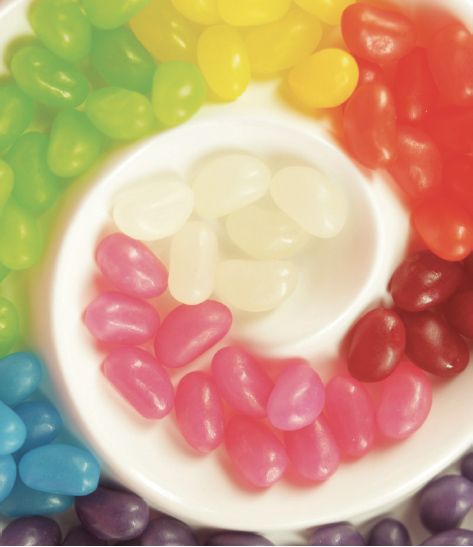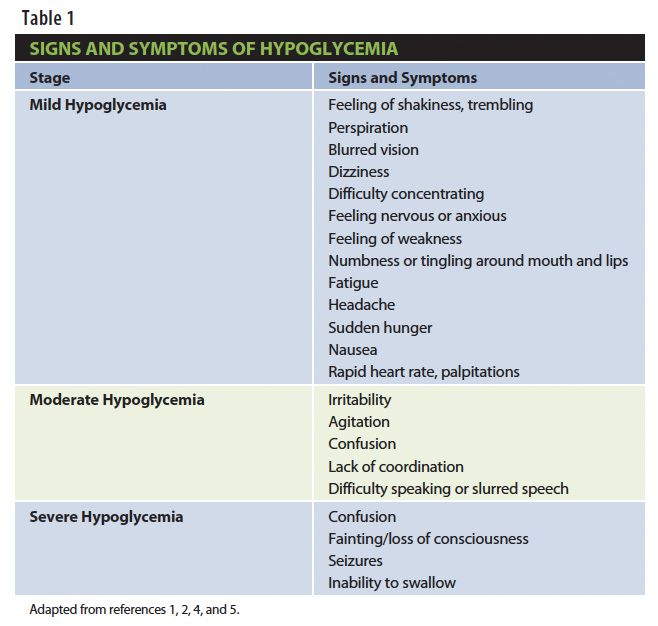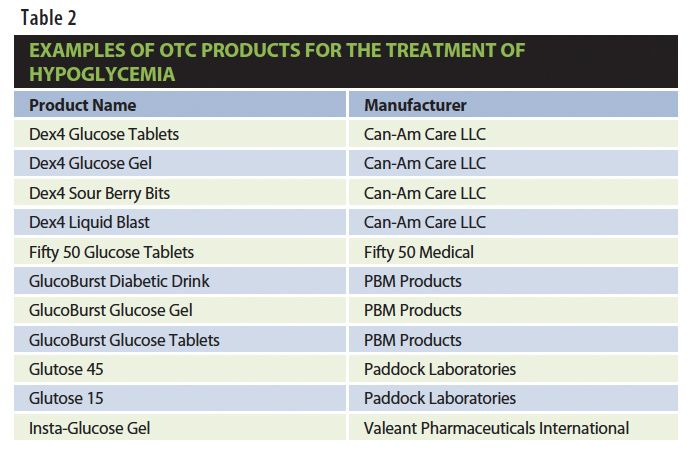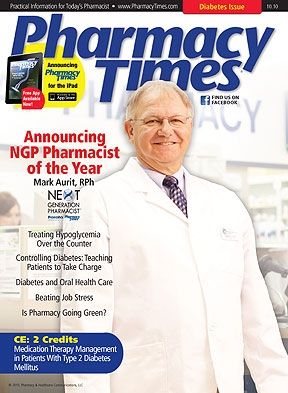Publication
Article
Pharmacy Times
Treating Hypoglycemia Over the Counter
Author(s):
Pharmacists can teach patients how to identify the symptoms of a hypoglycemic episode and provide methods for self-treatment.
Pharmacists can teach patients how to identify the symptoms of a hypoglycemic episode and provide methods for self-treatment.

Pharmacists are likely to encounter patients seeking recommendations for OTC products for the prevention, management, and treatment of hypoglycemia. Recognizing the signs and symptoms and identifying factors that can contribute to hypoglycemia is an important component of diabetic care. Examples of factors that may contribute to hypoglycemia include insufficient caloric intake due to skipping or delaying meals, inaccurate insulin dosing (eg, excessive doses of insulin, frequent adjustments, irregular timing), concomitant use of hypoglycemic drugs, excessive use of alcohol, drug interactions, very tight glycemic control, and increased physical activity.1,2
Symptoms of Hypoglycemia
The American Diabetes Association defines hypoglycemia as a blood glucose level 70 mg/dL or lower, but some patients may experience symptoms (Table 1) at higher glucose levels as well.1,3 The early warning signs of hypoglycemia may be classified as both autonomic (eg, shaking, sweating, trembling, tachycardia, palpitations) and neuroglycopenic (eg, dizziness, lack of coordination, difficulty concentrating).1 Some patients may experience hypoglycemia unawareness, a serious condition in which one experiences hypoglycemia without having symptoms, which could lead to loss of consciousness.1,4 Hypoglycemia unawareness is more likely to occur in patients who have neuropathy, those on tight glucose control, and those taking certain heart or antihypertensive medicines.4 Some patients may also experience episodes of hypoglycemia while asleep and may wake up feeling tired or confused.2,4

Treatment Options
Mild to moderate episodes of hypoglycemia are typically managed by ingestion of glucose.1 At the onset of symptoms, patients should immediately check their blood glucose levels. If the results are low, patients should be instructed to implement the “Rule of 15,” which means to eat or drink something that has 15 g of a fast-acting carbohydrate.1,4,5 If the symptoms continue or blood glucose levels are still below 70 mg/dL after 15 minutes, patients should consume an additional 15 grams of carbohydrates.1,5 If levels remain low, patients should be advised to seek medical attention. Food sources containing fast-acting carbohydrates for treating hypoglycemia include 8 oz of low-fat or nonfat milk, 4 oz of fruit juice or nondiet soda, 1 tablespoon of sugar, or 5 to 6 pieces of hard candy, such as jelly beans or fruit-flavored candies.1,5 In addition, there are OTC products specifically indicated for treating mild to moderate cases of hypoglycemia in the form of glucose tablets, gels, and drinks (Table 2).

If a meal time is not within 1 hour of the resolution of a hypoglycemia episode, patients should be encouraged to eat a small snack to prevent another episode and should monitor their blood glucose levels.1 As a preventive measure, patients with diabetes should be encouraged to always carry a fast-acting carbohydrate source in case of a hypoglycemic episode.1 It is important to inform patients that foods high in fat, such as chocolate and potato chips, are not ideal choices for treating hypoglycemia, because fat delays carbohydrate absorption.1,3
Cases of severe hypoglycemia may cause unconsciousness, coma, seizure, and the inability to swallow, and should be treated with a glucagon injection.1 Patients who use insulin, especially those with type 1 diabetes, should have a glucagon emergency kit, which is available by prescription only.1 Glucagon typically works within 5 to 10 minutes. If the patient is still unresponsive after administration, the caregiver should be instructed to call 911 for further treatment.1 Patients with glucagon kits should discuss the proper use of the kit with their primary health care provider or diabetes educator. Because glucagon kits have expiration dates, patients should be advised to routinely check the dates and replace accordingly to have one on hand in case of a severe hypoglycemic emergency.
Patient education on the use of the glucagon kit is critical to ensure the proper preparation and administration of the glucagon injection during an emergency. Family members and other caregivers should be instructed on the use of glucagon and be informed of the protocol for handling a severe hypoglycemic episode.1 Primary health care providers should always be informed of any severe cases of hypoglycemia.
During counseling, patients should be reminded about the importance of recognizing and immediately treating any hypoglycemia symptoms, especially because severe hypoglycemia may result in unconsciousness, coma, and seizures. Patients who experience frequent and/or severe episodes of hypoglycemia should be encouraged to discuss this issue with their primary health care provider. Patients should be aware of measures that may prevent or reduce episodes of hypoglycemia and should always be prepared to handle hypoglycemic episodes by6,7:
• Learning what factors can trigger episodes of hypoglycemia
• Routinely monitoring blood glucose levels throughout the day
• Taking medication as scheduled and using reminder devices if needed
• Trying not to delay or skip meals
• Having their blood glucose meter available to test glucose levels. Frequent testing may be critical, especially for those with hypoglycemia unawareness, particularly before driving a car
• Never ignoring symptoms of hypoglycemia
• Always having ample sources of fastacting carbohydrates on hand at home, at work, at school, and in the car
• Wearing a medical identification bracelet or necklace to indicate medical conditions, medications, and allergies
• Educating family, friends, and coworkers about hypoglycemia and what they should do to help in case of an episode.
Ms. Terrie is a clinical pharmacy writer based in Haymarket, Virginia.
References
1. Assemi M, Morello C. Diabetes mellitius. In: Berardi R, Newton G, McDermott JH, et al, eds. Handbook of Nonprescription Drugs. 16th ed. Washington, DC: American Pharmacists Association; 2009:853-854.
2. Causes and signs of hypoglycemia. Glucoburst Product Web site. Available at: www.glucoburst.com/hypoglycemia-causes-signs.aspx. Accessed August 2, 2010.
3. What is Hypoglycemia? CanAm Learning Center website. Available at: http://dex4.com/hypoglycemia/learning_center/what_is_low_blood_sugar.aspx. Accessed August 4, 2010.
4. Hypoglycemia. American Diabetes Association Web site. Available at: www.diabetes.org/living-with-diabetes/treatment-and-care/blood-glucose-control/hypoglycemia-low-blood.html. Accessed August 3, 2010.
5. Hypoglycemia. American Diabetes Association Planet D Web site. Available at: www.diabetes.org/living-with-diabetes/parents-and-kids/planet-d/new-to-diabetes/hypoglycemia.html. Accessed August 4, 2010.
6. Hypoglycemia. National Diabetes Information Clearinghouse Web site. Available at: http://diabetes.niddk.nih.gov/dm/pubs/hypoglycemia/. Accessed August 3, 2010.
7. Low Blood Sugar Do’s and Don’ts. CanAM Learning Center Web site. Available at: http://dex4.com/hypoglycemia/learning_center/do_dont_low_blood_sugar.aspx. Accessed August 2, 2010.







